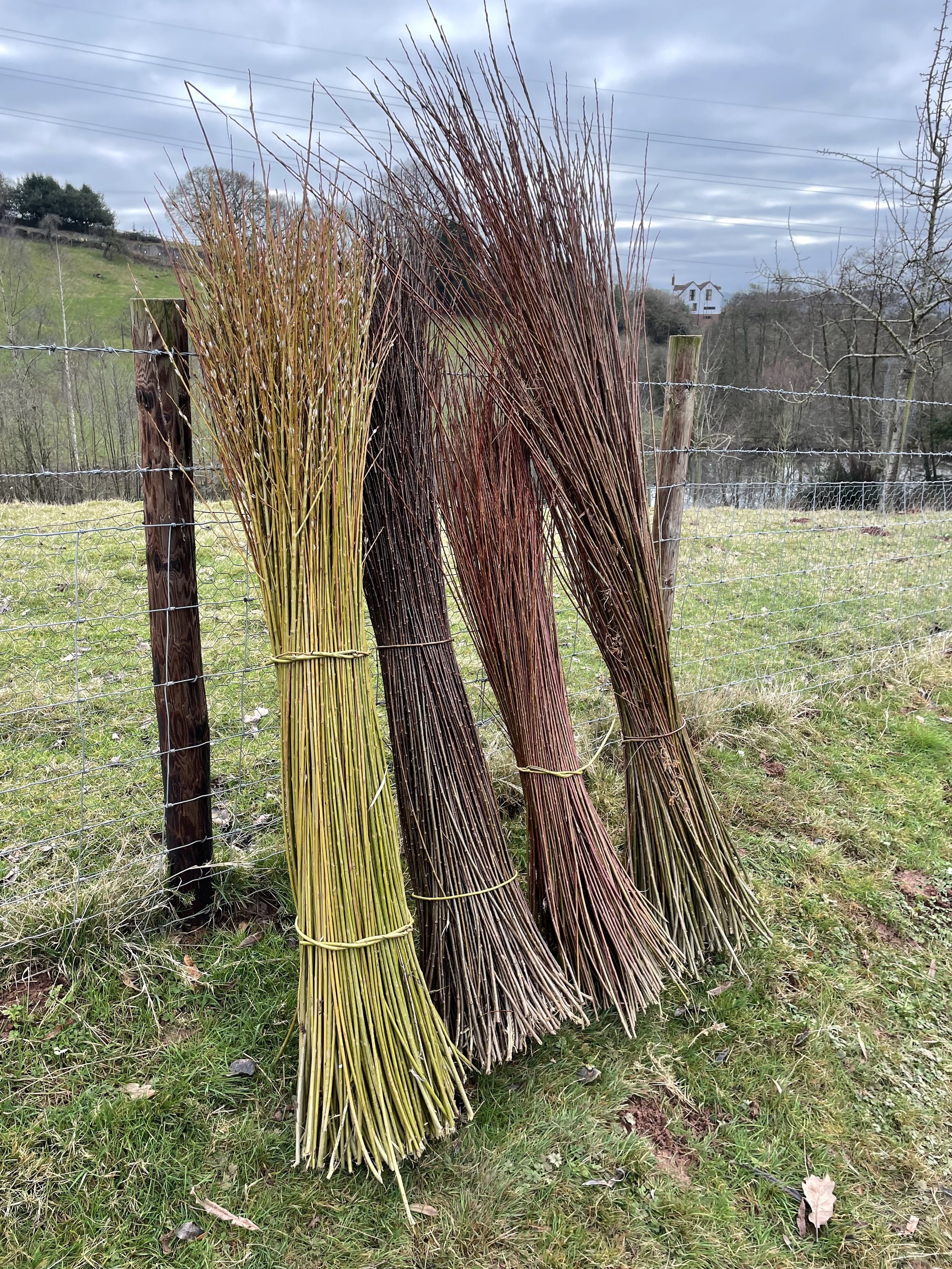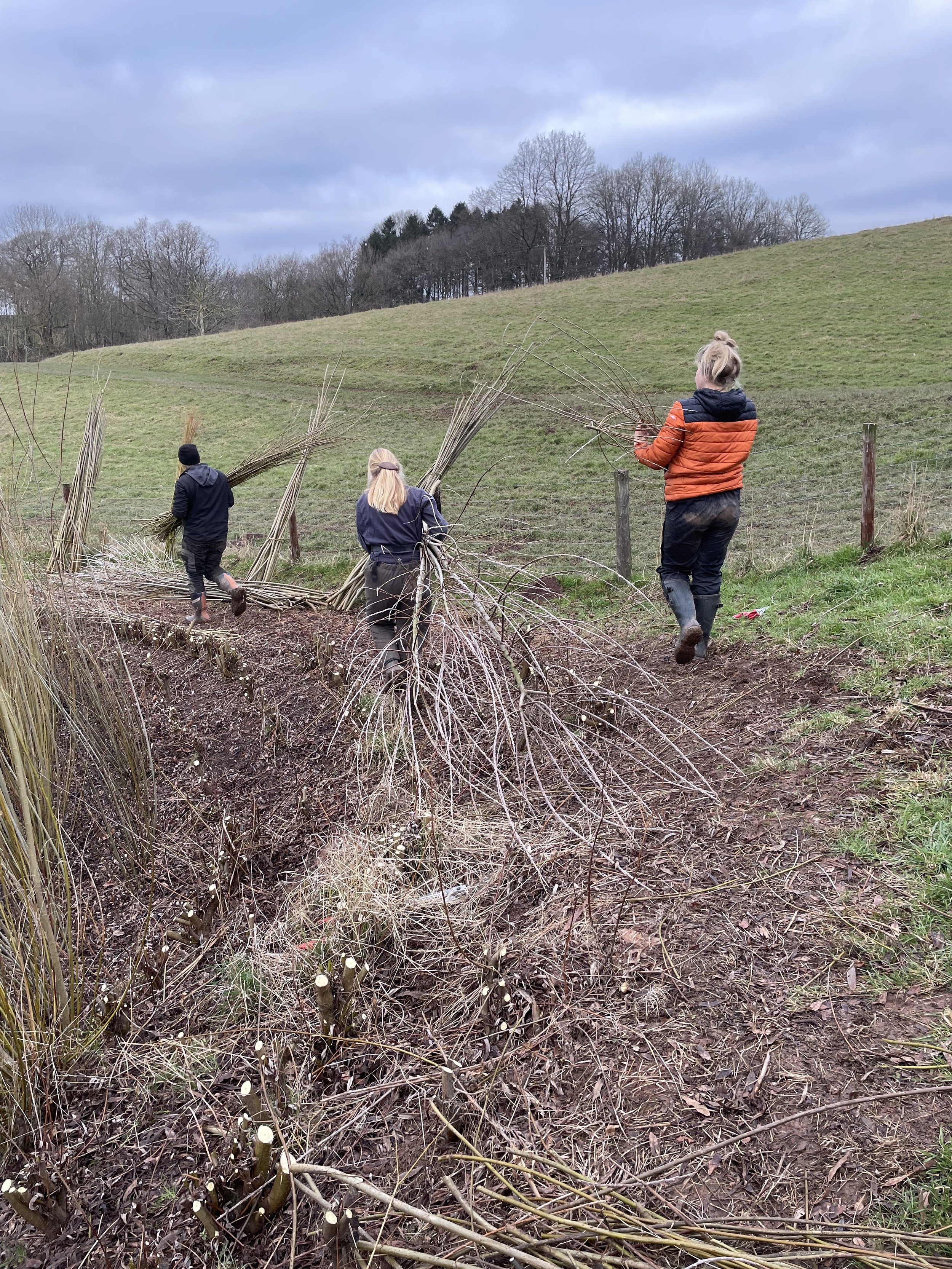A day in the life… of a willow grower
Working the land, planting and harvesting, is in my blood. As a small child, I used to go to work with my mum on a local farm picking apples, potatoes and black currants. Playing among the apple boxes in my wellies and waterproofs, I can still catch the rich, intoxicating smell of cider apples in the back of my throat. If I close my eyes, I can feel the wet leaves brushing against my hair as I run up and down the rows of apple trees. Generations before, my grandparents would pick hops across Herefordshire, moving from farm to farm in total harmony with the land. I can see the attraction.
It was therefore such a joy to join my basket maker and willow grower, Jenny Crisp, last week to harvest her willow beds. Togged up in slightly bigger wellies and waterproofs I headed out to Oldfields Cider in Tenbury Wells where Jenny and her daughter Issy, who together make up @Willow_with_roots, now grow their willow.

Willow is an amazing plant. It can filter wastewater and is naturally tolerant of contamination. At Oldfields Cider there are four tiered willow beds that act as a filtration system for the artisan cider producers. By the time the water reaches the fourth bed, it is completely clean and can then safely join the watercourse, in this case, a well-stocked fish lake beyond. I think it’s miraculous.
Jenny has been growing Willow in Herefordshire for more than three decades. Harvesting and planting take place between January and March each year and I was thrilled to spend another day with a sharp pair of secateurs helping with this year’s harvest.

There were a team of five of us cutting, sorting and stacking the willow. I was given the task of cutting the smaller willow whips from each plant, ahead of Josh who came behind with loppers cutting off the larger branches. Brigit was clearing up after us and Jenny and Issy were sorting the willow she took them, into useful lengths. We fell into a natural rhythm and conversation turned to Josh’s plans for a self-sufficient life in the beautiful Brecon Beacons where he was intending to grow willow as part of his crop, and Brigit’s pet pheasant Phil who likes to sit and watch her weave her willow baskets. Some lives really are that idyllic.
Jenny explained that some of the beds were harvested annually and some biannually. “The willow dictates what you make out of it” she told me, by leaving the plants for two years you get a thicker stronger growth best suited for things such as fencing and basket base rings. The willow used in the Woodee Log Trolleys and Log Loops is from the thinner one-year-old willow, these finer, more flexible ‘whips’, are best suited to being weaved onto our hand-forged metal frames. There are literally hundreds of varieties of willow and tens that are more generally used in basket making. We were harvesting two different varieties, Salix Triandra and Salix Viminalis, although there were at least a dozen other varieties across the four beds.
It was a perfect day. I was so engrossed I nearly forgot to take some pictures and had to be prompted by Jenny to get my camera out. If you would like to find out more about willow growing and basket making, get your hands on a copy of Jenny’s beautiful book “Willow” by visiting her website www.jennycrisp.co.uk Fancy trying your hand at basket making? Sign up for one of Jenny’s courses. I know I am.











Leave a comment